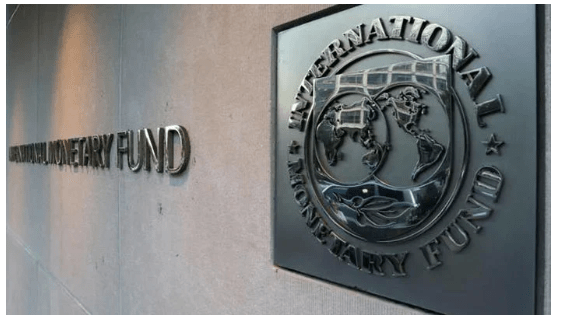Islamabad: With the start of policy level negotiations, Pakistan and the International Monetary Fund (IMF) look at the financial and external framework to secure staff level agreements under the TAG1> 3 Billion Standby Arrangement (SBA) Agreed to review; The News reported on Tuesday.
Policy level talks will end tomorrow (Wednesday). The lender has so far implemented a free market-based mechanism, the arrival of all required dollars، And have expressed concern over the exchange rate in the context of rising electricity and gas prices.
The current account deficit is expected to be reduced, so import compression will be used a bit to reduce the external financing gap.
The government will have to increase the gas tariff according to the regulator’s calculations. Electricity tariffs must be increased according to fuel price adjustment and quarterly tariff adjustment. The FBR’s envisaged tax collection target was proposed to be unchanged at Rs 9.415 trillion. However, the IMF has called for Plan B in the event of a lack of revenue in the current financial year.
In a separate meeting, caretaker Prime Minister Anwar-ul-Haq Kakar called for five to improve the tax system and expand the tax base to bring 1.5 million new taxpayers into the tax net Approved major steps.
FBR has started speeding to identify data based on the transactions of 1 million non-filers out of which 0.5 million should be brought into the tax net Will.
With the digitization of the economy and the introduction of a simple system for retailers, which Parliament had already allowed on the occasion of the last budget, The government expects to raise Rs 200 billion to meet any shortfall in achieving the required tax collection target. For the restructuring of the FBR administration, the policy and operation will be separated.
For five major initiatives, including digitization of holding tax, digital invoicing of sales tax, expanding the tax base and introducing easy retailers ’ scheme, anti-trafficking crackdown, And low voice digitization will be done in the current financial year to achieve the desired results.
Under the proposed revision in the financial framework, Budget numbers will be changed in the context of the debt service bill balloon in the form of principle and markup on both domestic and foreign loans. Second, to rationalize costs, the amount of subsidy can be reduced. At the federal level, the Public Sector Development Program (PSDP) will also be reduced for the current financial year so that the spending side can be restructured.
When a senior official was contacted, he said the IMF did not show an increase in external financing.
“Debt Servicing estimates will increase from Rs 8.3 to Rs 8.6 trillion for the current financial year while the initial budget estimates will be Rs 7.3 trillion so this bill is Rs 1000 The top official sources of Rs 1300 billion, ” will be more than confirmed by talking to The News on Monday.
Given the rising debt service bill، The IMF asked Islamabad to rationalize the expenditure on PSDP for the current financial year.
The government had allocated Rs 950 billion for the current financial year and the Ministry of Planning was tasked with working on the proposed reduction in PSDP expenditure. For the current financial year, the PSDP is expected to be reduced from Rs. 950 billion to Rs. 750 billion to Rs. 800 billion.
Second, the government allocated Rs. 1.064 billion for the subsidy, of which the government has used Rs. 2.5 billion in the first three months of the current financial year. In the first week of October 2023, the government released a subsidy of Rs. 70 billion for the power sector. However, the subsidy of allocated funds can be reduced from Rs. 1.064 billion to Rs. 850 billion.
The government has envisaged a non-tax revenue target of Rs 2.96 trillion of which Petroleum Levy will receive Rs 0.869 trillion for the current financial year.
The government has so far earned Rs 0.468 trillion in non-tax revenue in the first quarter of the current financial year. The recovery of petroleum levy in the first three months of the current financial year is Rs. 0.222 trillion.
On the development framework، The IMF called for funding to develop a new five-year strategy identifying major projects in all sectors and to guide sectoral investment projects Is.
With Pakistan’s extremely limited budget resources, choosing the right projects for funding becomes even more important. The PFM Act requires that all projects be technically approved before funding the budget. This is a good practice and should be maintained. However، There are no other selection criteria to guide the distribution of limited budget resources and will help ensure that the projects cover Pakistan’s climate Be linked to policy goals, including commitments.
Pakistan’s tight financial environment poses serious challenges to the implementation of the investment program. Funding allocated for ongoing projects in the PSDP is insufficient to meet project implementation plans and this reduces project delivery (Both between budget year and within).
More broadly, the PSDP is unbearable and should be reviewed. The total cost of completing the projects in PSDP is Rs. 10.7 trillion, which is 14 times more than the budget of Rs. 727 billion in 2022-23. Despite intentions to prioritize the completion of ongoing projects, the government added new projects at a total cost of Rs 2.3 trillion in the previous budget.
In addition, the separate preparation and monitoring of the current budget and development budget by the Finance Division and the Planning Commission, respectively, may lead to contradictory and sub-best decision-making. The government may consider imposing a windfall tax on the profits of high banks.

